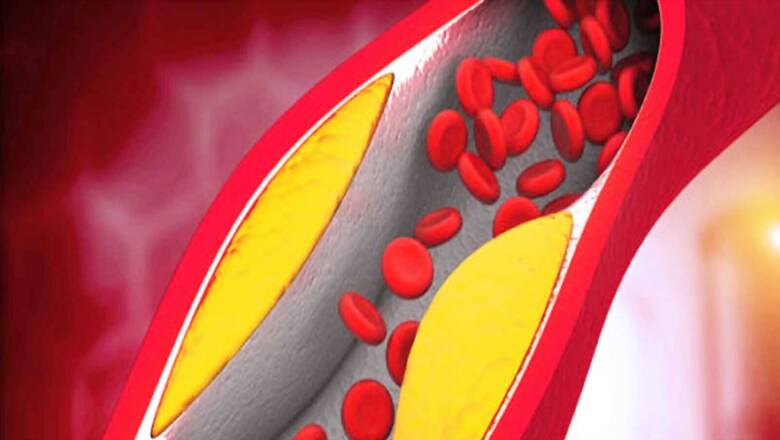
views
Contrary to popular assumption, cholesterol is neither bad nor dangerous. In reality, your body requires cholesterol to develop healthy cells. However, having a high level of low-density lipoprotein cholesterol (LDL), sometimes referred to as “bad” cholesterol, can make you more likely to develop heart disease. Poor lifestyle choices that include munching on junk and oily food, a lack of physical activity, and smoking also contribute to cholesterol risk factors.
You can form fatty deposits in your blood vessels if you have high cholesterol. Over time, these deposits grow and restrict the amount of blood that can pass through your arteries. Sometimes, these deposits can rupture unexpectedly and create a clot that results in a heart attack or stroke. Hence, it is essential that you recognize some tell-tale signs of cholesterol early, to get the necessary treatment.
Here are four warning signs of high cholesterol, that you must not ignore.
Skin rashes:
If you find your lesions, rashes, and pimple-like scars sprouting on your skin, then it’s time to get them checked. Having too much cholesterol in the bloodstream can result in the accumulation of fatty deposits in the skin. This may result in lesions that appear like ordinary skin rashes, characterised by fat-filled orangish or yellowish blisters. According to the American Academy of Dermatology Association, these skin conditions and growths can develop at the back side of your lower legs, the lines on your palms, and even around the corners of your eyes.
Swelling and numbness on hands and feet:
Cholesterol can also lead to another serious health condition called Peripheral artery disease or PAD. This in turn paves the way for reduced blood flow to the lower body, particularly the legs and feet. When walking, a person with PAD experiences acute leg pain because sufficient blood flow to the arms or legs is restricted. Gradually, if not treated your legs turn pale or blue, accompanied by numbness, swelling, and weakness in the lower part.
Nails start to deteriorate:
The arteries may become narrowed by excessive plaque buildup, which would restrict blood supply to the nails and other regions of the body. Dark lines, sometimes known as splinter haemorrhages, may appear on your nails as a result. It is classified as thin, reddish-brown to reddish-brown lines under your nails by Medline Plus.
Yellow spots around the eyes:
A benign yellow growth called a xanthelasma or xanthelasma palpebrarum (XP) can develop on or at the corners of the eyelids, just adjacent to the nose. The Cleveland Clinic claims that xanthelasma is caused by the accumulation of cholesterol deposits beneath your skin. According to the health organisation, xanthelasmas can also be brought on by other illnesses like diabetes, hyperlipidemia (high cholesterol), and thyroid issues.
Read all the Latest Lifestyle News here
















Comments
0 comment